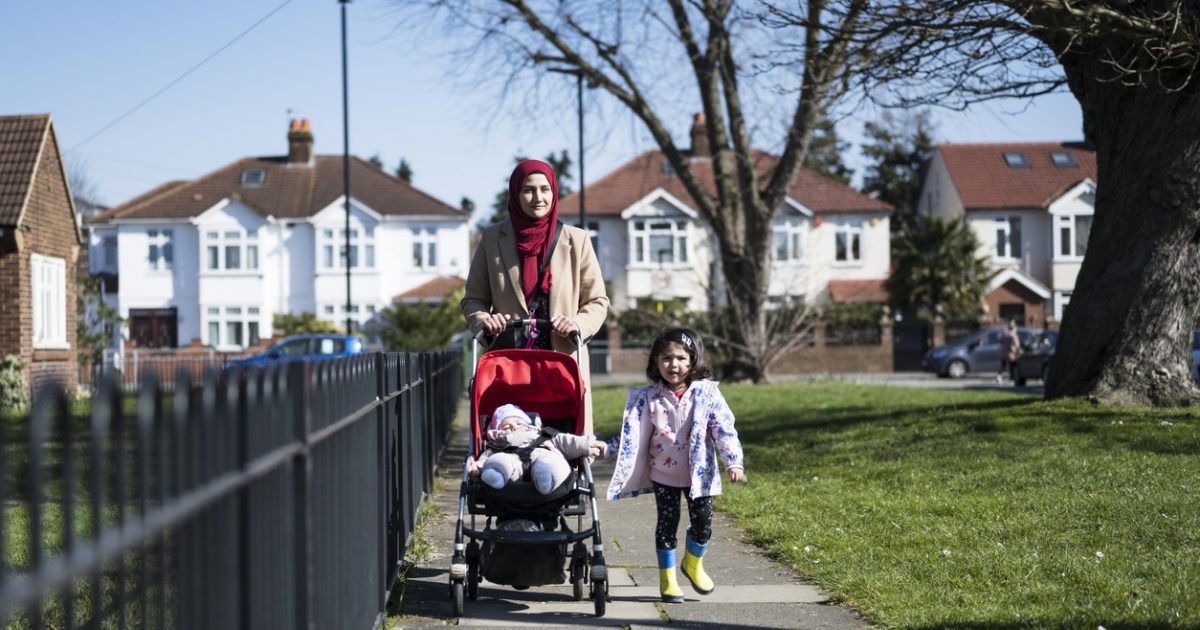NEF aims to co-design solutions with people most impacted through women-led policy and action

With inflation predicted to hit 10% this year, many people across the country are hurting. Despite the UK being the fifth richest economy in the world, more than one in five people are in poverty and 23.5 million people will be unable to afford the cost of living this year. However, people do not experience poverty equally; NEF analysis finds that single female and black, Asian or other ethnic minority households are experiencing costs that are 50% higher than their male and white counterparts as a proportion of their income.
As the cost-of-living crisis deepens this year, it’s more important than ever for the government to get timely support to women who need it. The social security is the most obvious mechanism to get cash to people quickly, yet the government have been reluctant to use it. When the then chancellor did eventually provide additional support through universal credit (UC), it was temporary and he’s since proposed even stricter conditionality on the people looking for full-time work as part of his leadership bid.
So, what happens when this mechanism that is meant to act as a safety net, not only fails to protect people, but disadvantages them, pushing them further into poverty, and entrenching gender inequality?”
Level of payment and cuts
The current social security system has been hollowed out by significant cuts taking at least £14bn out of the welfare system since 2010/11. If benefits had been maintained in real terms, families would have received £10.5bn more support in 2021 – 22. While these cuts hit many people across the UK, they have disproportionately impacted women.
This is mainly for two main reasons. First, women are more likely than men to need support as they still do the bulk of caring for children, elderly and/or disabled people, leaving less time for paid work. They are also more likely to receive benefits for those they care for, especially children. Combined with wage inequalities in the labour market, this means that women generally have lower earnings. Second, changes to work allowances for second earners, freezes on child benefit and the two-child limit have all impacted women more, particularly those from Black and ethnic minority backgrounds. The Women’s Budget Group calculated that out of the £56bn worth of cumulative cuts to social security and tax credits since 2010, around 57% have come from women’s purses.
Social security and its underlying principles
As well as cuts to the level of social security, there were significant changes introduced in 2012 – 13 with the advent of UC. It aimed to create a simpler social security system through collapsing all working age benefits into one single system and incentivise people back into work through (1) increasing conditionality attached to out of work benefits and sanctions for those deemed not to be meeting conditions; and (2) increasing the generosity of in-work benefits and the taper rate by which they are withdrawn upon entry into the labour market.
Increased conditionality has disproportionately impacted those with caring responsibilities who tend to be women. The principle underlying UC devalues unpaid childcare and presents difficulties for mothers with competing demands between meeting the mandatory work-related UC requirements as well as unpaid childcare. Rather than a lack of will, barriers such as inadequate and unaffordable childcare and the proliferation of insecure, low-paid jobs are the main reasons preventing some mothers from accessing employment. Research has shown punitive measures such as increased conditionality and sanctions do not help women back into employment. While UC’s proposed increase to in-work benefits and lower taper rates could have supported women to enter the labour market and help improve their pay, the severe austerity measures have meant this intention was never realised.
While the need for simplification was clear, the way that benefits are now means tested and paid under UC has further complicated the system resulting in an unequal gender impact. Under UC, needs are assessed jointly for couples and payment is made into one bank account for everyone in the household. This assumes that money will be shared amongst all family members but research shows equal distribution rarely happens, with men getting a larger portion of the resources.
Impact on gender inequality
The level of payment and the conditions under which benefits are paid can push women further into poverty, making them unable to meet their and their families’ essential needs. Women have had to rely on food banks and take on unsustainable levels of debt to try and juggle both unpaid childcare and low-paid work. Those subjected to no recourse to public funds have been excluded from accessing social security altogether, pushing them into destitution. Entrenching economic insecurity can also create a climate where women and girls lacking financial autonomy are pushed into abuse or exploitation.
A solution co-designed with women affected
Social security is about more than just supporting people into paid employment. It should also alleviate poverty; improve living standards; reduce inequality and promote social stability. The impact of an inadequate social security system has a high cost for women, especially those who are disabled, migrants and/or from an ethnic minority background.
Those with the power to design and deliver policy rarely involve those with lived experience so people often feel they have little influence over the political process. We want to change this by co-designing policy solutions with people most impacted. Over the next six months, NEF aims to work with grassroots women-led organisations across England. We will be hearing from women with lived experience about the main issues of the system from a gender perspective and what a Living Income would mean to them. Most importantly, we will be co-designing policy to ensure that a Living Income promotes gender equality.
Image: iStock


